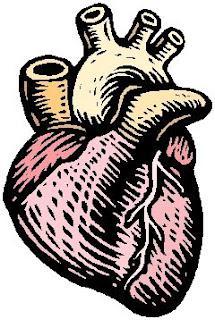
I've heard from a bunch of readers that our terms cardiac arrest, heart attack, and heart failure are confusing.
Today I thought I'd offer a quick vocabulary lesson. One of the biggest challenges for students of medical school and other health professions schools is learning the 1,000's of words that medical professionals use, but we end up with words and phrases that are very specific and very descriptive.
Cardiac Arrest. This is an electrical problem of the heart. The electrical activity of the heart stops or becomes disorganized in what we call an arrhythmia. And because of the electrical problem, the heart stops pumping blood. If you've attended CPR class, you'll know that the electrical problems include PEA (pulseless electrical activity), ventricular tachycardia (VT), ventribular fibrillation (VF), and asystole.
When athletes collapse during training or competition, cardiac arrest is usually the problem.
Heart Attack. This is a plumbing problem in the heart. Heart attack is the lay term for the medical problem we call myocardial infarction, or MI. This problem is due to blockages in the coronary arteries--the small arteries that bring bloodflow and oxygen to the heart muscle itself.
In the most common scenario, there is build-up of cholesterol or lipid-laden plaque in the wall of a coronary artery that produces narrowing of the artery and reduced bloodflow in that artery. When that bloodflow is sufficiently reduced, individuals experience chest pain that we call angina. When the angina occurs with exertion, we call it exertional angina. When the angina occurs at rest, we call it unstable angina or rest angina.
Myocardial infarction occurs when one of these plaques ruptures (on the inside of the coronary artery), exposing the plaque material to the bloodstream. The body responds by forming a blood clot at that location, further restricting--and possibly stopping--bloodflow in that artery. With no bloodflow or oxygen, the heart muscle in the area of that artery dies pretty quickly. When heart muscle dies, the process can be detected on the EKG and by the presence of heart enzymes (released into the bloodstream from dying heart muscle cells) on a blood test.
Heart Failure. We use this term when the heart pumping function is weak. This can be either an acute, or short-lived problem, or a chronic, long-term problem. There are many causes, including myocardial infarction, but also including various problems with the heart valves, inherited conditions, and others.
A Useful Video Clip. One of my colleagues at work brought to my attention a great video clip on the topic of Heart Disease and Heart Attacks at The Khan Academy. With the help of some great illustrations at the blackboard, the narrator goes over each of these problems. Take a look.
